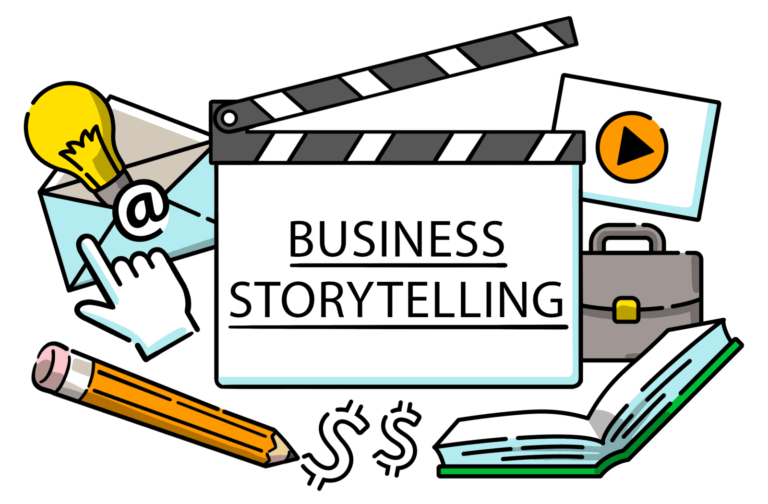For any startup, particularly small and medium enterprises (SMEs), brand storytelling is not just a marketing tactic but a foundational strategy. It is essential for creating a deep connection between the brand and its customers. Through compelling narratives, businesses can convey their values, mission, and the passion behind their products or services. This connection fosters loyalty and differentiates the brand in a crowded market.
Moreover, storytelling allows startups to humanise their brand. In an era where consumers are bombarded with  advertisements and impersonal automated messages, a well-crafted story can make a brand feel more approachable and trustworthy. Daniel Li is the Co-Founder and CEO of Plus Docs, explains why sharing stories about the company’s origins, challenges, and triumphs, SMEs can create a sense of authenticity that resonates deeply with their audience.
advertisements and impersonal automated messages, a well-crafted story can make a brand feel more approachable and trustworthy. Daniel Li is the Co-Founder and CEO of Plus Docs, explains why sharing stories about the company’s origins, challenges, and triumphs, SMEs can create a sense of authenticity that resonates deeply with their audience.
Evolution of Storytelling in the AI Era
The advent of AI has significantly changed how content is produced. Although vast amounts of content can be generated quickly, the challenge lies in ensuring that this content stands out. Impersonal, AI-generated content is prevalent, making it more critical for small businesses to focus on quality storytelling that resonates on a human level. Authentic, well-crafted stories are what make brands memorable. AI can handle data analysis and content creation at scale, but it often lacks the emotional depth and creativity that humans bring to storytelling. This is why human oversight is essential in crafting narratives that truly connect with audiences.
Leveraging AI in Storytelling
 An AI writing app or presentation maker can play a supportive role in the storytelling process. They can be transformative in helping businesses generate drafts of ideas, personalise content for different audiences, and automate the creation of new presentation templates. These tools can save time and enhance productivity, allowing the creative team to focus on personalisation and refining the narrative. The key is to find the right AI tools for your unique business and use them as an aid rather than a replacement for human intuition.
An AI writing app or presentation maker can play a supportive role in the storytelling process. They can be transformative in helping businesses generate drafts of ideas, personalise content for different audiences, and automate the creation of new presentation templates. These tools can save time and enhance productivity, allowing the creative team to focus on personalisation and refining the narrative. The key is to find the right AI tools for your unique business and use them as an aid rather than a replacement for human intuition.
Balancing Profitability and Humanity
Startups often face the challenge of being profitable while maintaining a human-centric approach. The solution lies in identifying and communicating the unique brand story effectively. A strong narrative builds credibility and attracts customers who align with the brand’s values which drives sales and fosters long-term loyalty, proving that profitability and humanity can go hand in hand. By focusing on the human aspects of their brand, startups can create a sense of community and belonging and can lead to higher lifetime value.
Tailoring Stories to Different Audiences
Understanding the diverse needs and preferences of target audiences is paramount. Customising messages for different audiences ensures that the story resonates more deeply and feels more personal, enhancing the overall impact. Different audience segments have unique motivations, challenges, and interests, and a one-size-fits-all approach to storytelling is unlikely to be effective.
Small businesses should invest time in researching and understanding their audience personas. This could include gathering demographic information, psychographic profiles, and behavioural insights to create more relevant and impactful narratives. For example, a story that resonates with young, tech-savvy consumers may not have the same impact on older, more traditional audiences.
The Role of Visuals and Design in Storytelling
High-quality visuals and designs are critical components of effective storytelling. They not only grab attention but  also convey complex messages quickly and effectively. A well-designed graphic can encapsulate a story in seconds, offering an immediate emotional connection. Visuals can include everything from presentations and custom illustrations to infographics and video content. Each visual element should support and enhance the overall narrative, creating a cohesive and engaging story.
also convey complex messages quickly and effectively. A well-designed graphic can encapsulate a story in seconds, offering an immediate emotional connection. Visuals can include everything from presentations and custom illustrations to infographics and video content. Each visual element should support and enhance the overall narrative, creating a cohesive and engaging story.
Moreover, the use of visuals can enhance the impact of a story. In a digital age where attention spans are short, compelling visuals can capture interest quickly and encourage sharing on social media platforms. This can amplify the reach of the story and drive greater engagement.
Overcoming Storytelling Challenges
SMEs often struggle with storytelling due to limited resources and lack of expertise. However, this challenge can be mitigated by investing in user-friendly tools that streamline the process. These tools can help create professional-quality presentations and narratives without requiring extensive design skills. There are numerous tools available that offer templates, design assistance, and automation features to help startups craft compelling stories.
Boosting ROI Through Storytelling
Effective storytelling enhances every aspect of a small business’s operations. Internally, it improves  communication and alignment among team members. A compelling story can lead to higher engagement, better customer retention, and ultimately, increased ROI. By integrating storytelling into the core strategy, SMEs can achieve significant business growth. Storytelling can also enhance brand loyalty, encouraging repeat business and positive referrals.
communication and alignment among team members. A compelling story can lead to higher engagement, better customer retention, and ultimately, increased ROI. By integrating storytelling into the core strategy, SMEs can achieve significant business growth. Storytelling can also enhance brand loyalty, encouraging repeat business and positive referrals.
Final Thoughts
While AI offers valuable tools and efficiencies, the essence of human storytelling remains irreplaceable. As technology continues to progress, the ability to integrate AI into crafting marketing narratives will be a vital skill for startups seeking to build strong, lasting relationships with their audience, navigate the complexities of the modern market and achieve sustainable growth.

